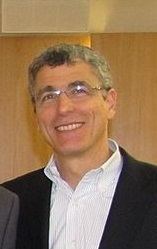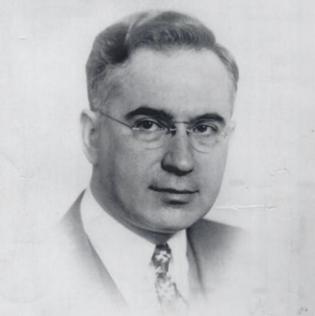Related Research Articles

Judaism is an Abrahamic, monotheistic, and ethnic religion, comprises the collective spiritual, cultural, and legal traditions of the Jewish people. Contemporary Judaism having originated as an organized religion in the Middle East during the Bronze Age, and evolved from Yahwism, the cultic religious movement of ancient Israel and Judah, around the 6th/5th century BCE, and is thus considered to be one of the oldest monotheistic religions. Along with Samaritanism, to which it is closely related, Judaism is one of the two oldest Abrahamic religions.

Reform Judaism, also known as Liberal Judaism or Progressive Judaism, is a major Jewish denomination that emphasizes the evolving nature of Judaism, the superiority of its ethical aspects to its ceremonial ones, and belief in a continuous revelation which is closely intertwined with human reason and not limited to the Theophany at Mount Sinai. A highly liberal strand of Judaism, it is characterized by little stress on ritual and personal observance, regarding Jewish law as non-binding and the individual Jew as autonomous, and by a great openness to external influences and progressive values.

Reconstructionist Judaism is a Jewish movement based on the concepts developed by Rabbi Mordecai Kaplan (1881–1983) that views Judaism as a progressively evolving civilization rather than just a religion. The movement originated as a semi-organized stream within Conservative Judaism, developed between the late 1920s and the 1940s before seceding in 1955, and established a rabbinical college in 1967. Reconstructionist Judaism is recognized by many scholars as one of the five major streams of Judaism in America alongside Orthodox, Conservative, Reform, and Humanistic.

Judaism does not centralize authority in any single individual or group. The formulation of principles of faith that are universally recognized by all branches of Judaism remains undefined. There is no central authority in Judaism in existence today - although the Sanhedrin, the supreme Jewish religious court, would fulfill this role if it were re-established. Instead, Judaism's principles of faith remains debated by the rabbis based on their understanding of the sacred writings, laws, and traditions, which collectively shape its theological and ethical framework. The most accepted version in extent is the opinion of Maimonides
Modern Orthodox Judaism is a movement within Orthodox Judaism that attempts to synthesize Jewish values and the observance of Jewish law with the modern world.

Conversion to Judaism is the process by which non-Jews adopt the Jewish religion and become members of the Jewish ethnoreligious community. It thus resembles both conversion to other religions and naturalization. The procedure and requirements for conversion depend on the sponsoring denomination. Furthermore, a conversion done in accordance with one Jewish denomination is not a guarantee of recognition by another denomination. Normally, though not always, the conversions performed by more stringent denominations are recognized by less stringent ones, but not the other way around. A formal conversion is also sometimes undertaken by individuals whose Jewish ancestry is questioned or uncertain, even if they were raised Jewish, but may not actually be considered Jews according to traditional Jewish law.
The Union for Reform Judaism (URJ), formerly known as the Union of American Hebrew Congregations (UAHC) until 2003, founded in 1873 by Rabbi Isaac Mayer Wise, is the congregational arm of Reform Judaism in North America. The other two arms established by Rabbi Wise are the Hebrew Union College-Jewish Institute of Religion and the Central Conference of American Rabbis. The current president of the URJ is Rabbi Rick Jacobs.
"Who is a Jew?" is a basic question about Jewish identity and considerations of Jewish self-identification. The question pertains to ideas about Jewish personhood, which have cultural, ethnic, religious, political, genealogical, and personal dimensions. Orthodox Judaism and Conservative Judaism follow Jewish law (Halakha), deeming people to be Jewish if their mothers are Jewish or if they underwent a halakhic conversion. Reform Judaism and Reconstructionist Judaism accept both matrilineal and patrilineal descent as well as conversion. Karaite Judaism predominantly follows patrilineal descent as well as conversion.
The Central Conference of American Rabbis (CCAR), founded in 1889 by Rabbi Isaac Mayer Wise, is the principal organization of Reform rabbis in the United States and Canada. The CCAR is the largest and oldest rabbinical organization in the world. Its current president is Rabbi Erica Asch.
Elmer Berger was a Jewish Reform rabbi widely known for his anti-Zionism. He was the executive director of the American Council for Judaism from its founding in 1942 until 1955. After this time, he served as a consultant until he was forced to resign in 1968, when he founded American Jewish Alternatives to Zionism.
Reform Zionism, also known as Progressive Zionism, is the ideology of the Zionist arm of the Reform or Progressive branch of Judaism. The Association of Reform Zionists of America is the American Reform movement's Zionist organization. Their mission “endeavors to make Israel fundamental to the sacred lives and Jewish identity of Reform Jews. As a Zionist organization, the association champions activities that further enhance Israel as a pluralistic, just and democratic Jewish state.” In Israel, Reform Zionism is associated with the Israel Movement for Progressive Judaism.
Early criticism of Judaism and its texts, laws, and practices originated in inter-faith polemics between Christianity and Judaism. Important disputations in the Middle Ages gave rise to widely publicized criticisms. Modern criticisms also reflect the inter-branch Jewish schisms between Orthodox Judaism, Conservative Judaism, and Reform Judaism.
The American Council for Judaism (ACJ) is an organization of American Jews committed to the proposition that Jews are not a national but a religious group, adhering to the original stated principles of Reform Judaism, as articulated in the 1885 Pittsburgh Platform. In particular, it is notable for its historical opposition to Zionism. Although it has since moderated its stance on the issue, it still advocates that American Jews distance themselves from Israel politically, and does not view Israel as a universal Jewish homeland. The ACJ has also championed women's rights, including the right for women to serve as rabbis, and has supported Reform Jewish congregations and contributed to the publication of new editions of prayer books for religious services predominately in the English language for Jews in English-speaking countries.
The Union Prayer Book was a Siddur published by the Central Conference of American Rabbis to serve the needs of the Reform Judaism movement in the United States.
Same-sex marriage in Judaism has been a subject of debate within Jewish denominations. The traditional view among Jews is to regard same-sex relationships as categorically forbidden by the Torah. This remains the current view of Orthodox Judaism.
Dana Evan Kaplan is a Reform rabbi known for his writings on Reform Judaism, in particular, and American Judaism, generally. He has also written on other subjects, including American Jewish history and Jews in various diaspora communities. Kaplan has been the rabbi of Temple Beth Shalom of the West Valley in Sun City, Arizona, since June 2019.

Richard Jacobs is a Reform rabbi and the president of the Union for Reform Judaism (URJ), the congregational arm of the Reform movement in North America which represents an estimated 1.5 million Reform Jews in nearly 900 synagogues across the United States and Canada. He is the first Union president to have served most of his career as a congregational rabbi. Before being installed as URJ president in June 2012, he served for nine years at Brooklyn Heights Synagogue and then for twenty years at Westchester Reform Temple in Scarsdale, New York.
The Columbus Platform, officially known as The Guiding Principles of Reform Judaism, is the 1937 platform for American Reform Judaism adopted by the Central Conference of American Rabbis. The Columbus Platform was the first Reform platform to assert Reform Judaism's support for the Zionist movement, a repudiation of the anti-Zionism of the earlier Pittsburgh Platform. The platform also embraced aspects of traditional Judaism that the Reform movement had previously rejected.

Lance Jonathan Sussman is a historian of American Jewish History, college professor, Chair of the Board of Governors of Gratz College, Melrose Park, PA and until summer 2022 the senior rabbi, now emeritus, at Reform Congregation Keneseth Israel (KI) located in Elkins Park, PA. He is the author of books and articles including: Isaac Leeser and the Making of American Judaism (1995) and Sharing Sacred Moments (1999), and a co-editor of Reform Judaism in America: A Biographical Dictionary and Sourcebook (1993) and New Essays in American Jewish History (2009). Since 2010 he has also published articles on Judaism and art.

Samuel Solomon Cohon was an American rabbi and Chair of Theology at Hebrew Union College, a leader of American Reform Judaism in the mid-20th century.
References
- ↑ Meyer 1995, p. 270.
- ↑ Central Conference of American Rabbis (ccarnet.org/rabbis-speak/platforms/declaration-principles/ (CCAR ed. 2014)
- ↑ Vital 1999.
- ↑ Meyer 1995, p. 157–158.
- ↑ Vital 1999, p. 114.
- ↑ Vital 1999, p. 116, footnote 24.
- ↑ Meyer 1995, p. 3.
- ↑ "The Guiding Principles of Reform Judaism, "The Columbus Platform" - 1937". Archived from the original on 2012-03-13. Retrieved 2014-01-28.
- ↑ Religion: Jews v. Jews, Time, Jun. 20, 1938
- ↑ "Reform Judaism: A Centenary Perspective. Adopted in San Francisco – 1976". Archived from the original on 2010-09-24. Retrieved 2010-05-01.
- ↑ "Reform Judaism & Zionism: A Centenary Platform "The Miami Platform" - 1997". Archived from the original on 2011-11-25. Retrieved 2010-05-01.
- ↑ "A Statement of Principles for Reform Judaism, Adopted in Pittsburgh - 1999". Archived from the original on 2010-02-20. Retrieved 2010-05-01.